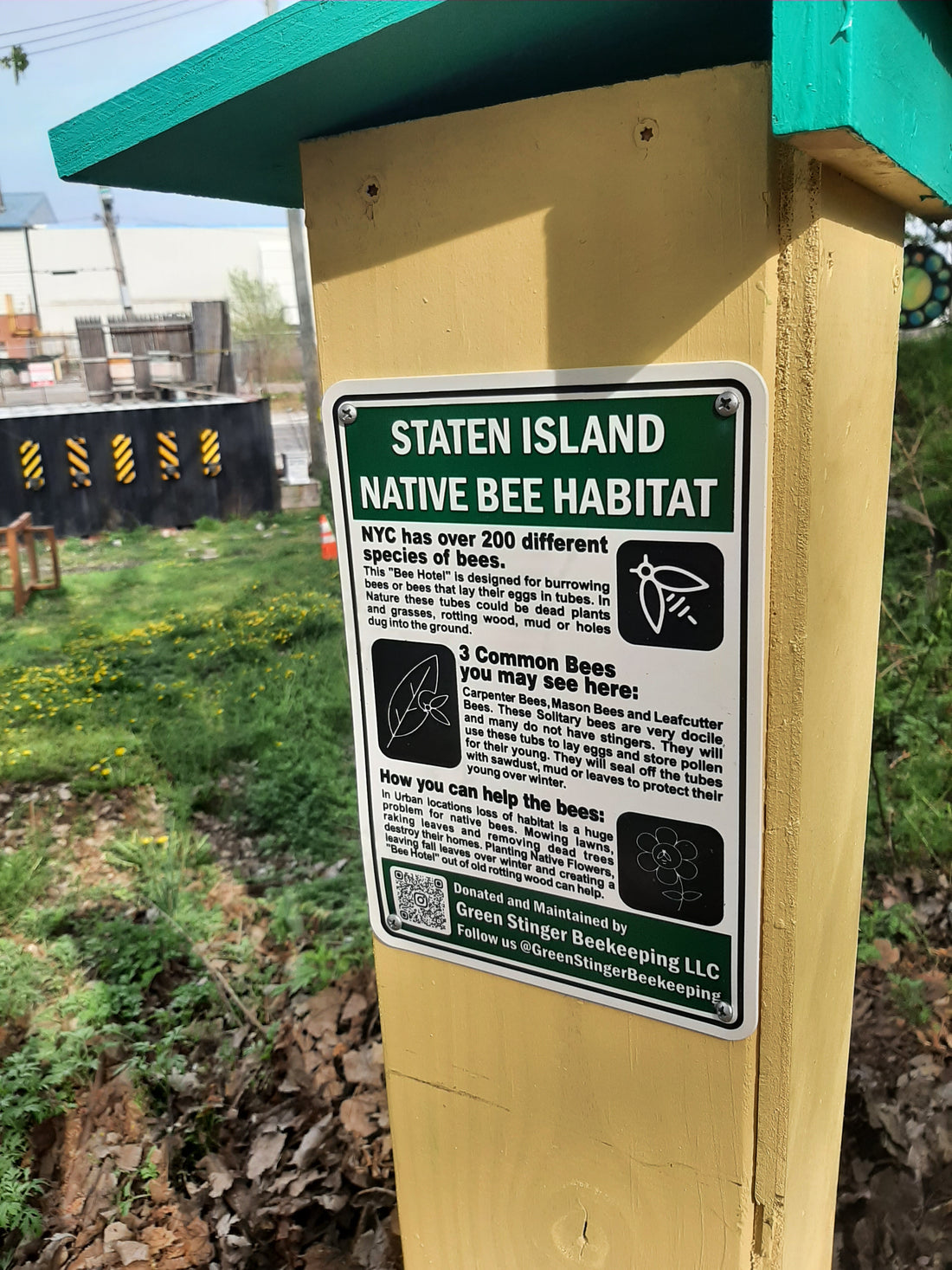Staten Island Native Bee Habitat Project 
In urban neighborhoods like we have on Staten Island, Native Bees have a problem with loss of habitat. Many native solitary bees, who are extremely important for pollination, need rotting wood and tall grasses to lay eggs and larvae. On Staten Island we tend to remove both of these habitats as much as possible. We mow our laws, cut down dead trees and landscape "treat" areas with toxic chemicals.
Living sustainable in NYC is difficult when you need to keep up with the Joneses. What will you neighborhoods think if you don't cut your grass, if dandelions grow, if you leave a pile of rotting wood for the bees? Will they call 311?

Here at Green Stinger we want to help Staten Islanders tackle these obstacles to living more sustainable, so we are launching our new Native Bee Habitat program.
We have been designing decorative and interesting looking bee hotels that's are also educational. People will like the way they look and learn from them, even thou they still are just a piles of rotting wood and grasses. 
To launch our program we are installing several Native Bee Habitats in public locations around Staten Island with information signs to educate people about Native Bees.

Education is key to breaking the destructive cycle of manicured lawns we are stuck in as a society. Our hope is as people see these Bee Habitat in beautiful locations, and learn how safe and beneficial Native Bees are, maybe they will consider adding a bee hotel to their landscaping at home.
If you would like to be part of our new program, if you have a public accessible park area feel free to contact us! 347-267-9095
If you would like to build your own Bee Habitat here are some tips!
- Use untreated, non-painted wood
- Predrilled holes or "tubes" into the wood, use a variety of different diameters from ¼ to ⅜ inches.
- Drill the holes 5 to 6 inches deep, but do not go all the way through. Bees will feel safer with only one entrance to protect.
- Make sure the holes slant downward, slightly so water can drain out
- Paint the exterior bright colors, this will help the bees visual find the tubes, but do not paint the front. Make it look nice for humans too.
- These habitats can be as small as a bird house or as large as a dog house. Make sure they are a few feet off the ground. Hanging a small bird house size habitat in a tree is great.
- Make sure you do not move the habitat during the season. Bees will learn the location and return generation after generation, but relocating it will cause a delay in new bees returning. 2 to 3 generations will hatch per year on Staten Island.
Other tips
- Don't worry about birds! Birds will start to hang out around your bee hotel to eat the bees. Enjoy the beautiful birds!
- Keep an eye out for spider webs blocking the entrance, simple wiping them away in enough.
- Keep the blocks of wood interchangeable, as wood rots or many other less desirable insects infest the tubes, you can remove a small section and replace them. Bees can also become infested with mites or other parasites, at that time you should remove those tubs. This is not very common on Staten Island due to the low population of native bees here.
- Native bees like Leafcutters and Mason Bees do not sting, so you may enjoy watching closely as they develop the tubes and pollinate your garden. But they require little maintenance. Checking on you Habitat and cleaning it out one or twice a year is normally sufficient.
- Tag us in a photo of your Bee Hotel! @GreenStingerBeekeeping

